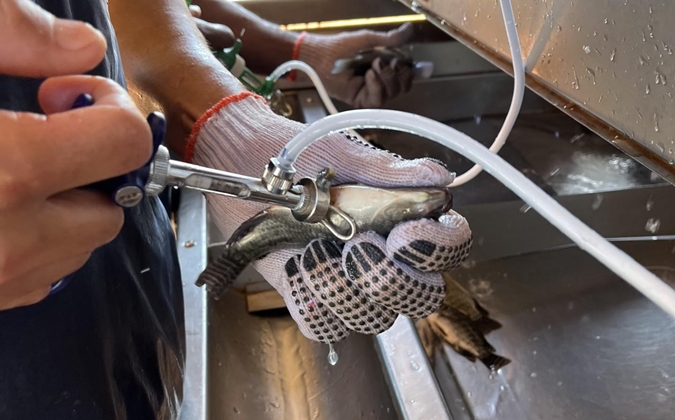
Bacteriophages’ potential for aquaculture still waits to be tapped
Bacteriophages — viruses which infect and kill bacteria — have been seen as a promising option for use in aquaculture for a number of years. With good reason, says Maria Lavilla, PhD, of Spanish food and marine research center AZTI.
“They are gaining interest, especially against certain Vibrio species, because in some cases, vaccines cannot be applied. There are approved vaccines against other pathogens like Aeromonas, for instance, and even Vibrio anguillarum,” she said.
“Aquaculture is a big industry, and you have to consider shrimp too, where there are no vaccines against major pathogens like Vibrio harveyi or Vibrio parahaemolyticus. Also, vaccines cannot be used to protect juvenile fish because they have an immature immune system.”
Food safety is another reason to consider their worth, she noted, with a number of human pathogenic Vibriopresent in aquaculture. Lavilla and colleagues recently published a paper in the journal Foods exploring phage application,1 linking potential advantages to human health and animal health, as well as environmental improvements through sanitation and biological control.
Antibiotic alternative — or complement
The paper pointed to the considerable amount of research dedicated to the use of phages against V. harveyi in particular. But as well as against Vibrio species, phages have shown good performance as both a prophylactic and treatment method against some of the most severe pathogens such as Pseudomonas and Flavobacterium, while avoiding the use of antibiotics, she continued.
“Even 100% survival has been achieved in some cases. Of course, it depends on the quantity and the method of administration, so phage application must be optimized in order to obtain the best results.”
Providing alternatives to the use of antibiotics is increasingly important, with a considerable body of evidence on the effects of overuse on pathogen resistance, as well as potentially damaging effects on the internal microbiome of the animals they are used on.
Phages represent a particularly attractive option for aquaculture, Lavilla continued, as they are very effective in a liquid medium but can also be injected like a vaccine or applied with feed.
“They can also be applied in combination with other antimicrobials, even with antibiotics, giving some advantage because phages are effective against antibiotic-resistant bacteria, offering positive synergies,” she said.
Although phages are susceptible to some disinfectant methods such as UV, research to date has served to characterize the resistance of different phages to different conditions, which should support decision-making in the field.
Official approval awaits
In Europe, despite these apparent advantages and the fact that commercial phages are available and used in other parts of the world, they are not used outside of trial settings. A lack of established legal framework is proving the sticking point, Lavilla said, while diversity among phages, due to them evolving alongside their bacterial hosts, may be making it difficult for legislators to place them within a single regulation.
Regardless, there is hope that things may be set to change.
“Due to the potential that phages have, many international organizations like the European Medicines Agency are already finishing scientific guidance on the quality, safety and efficacy of phages as veterinary medicines. It’s a matter of time, and I hope that this legal framework will be soon available,” she said.
There remains further work to be done to provide the utmost reassurance on safety and efficacy, she added. While there have been scores of studies on phages in controlled environments, further work is needed under field conditions, as well as establishing the most efficacious application methods for different settings.
1 Lavilla M, Domingo-Calap P, Sevilla-Navarro S, Lasagabaster A. Natural killers: Opportunities and challenges for the use of bacteriophages in microbial food safety from the one health perspective. Foods. 2023;12(3):552.
Posted on: July 05, 2023






